Birding and Conservation
Belize is home to over 605 bird species. At least 20 percent are migrants, choosing to overwinter in the lush tropics and contributing to incredible avifaunal diversity. In northern Belize, migrants are seen earlier than in other parts of the country, making this area a true birder's paradise. Along the New River and associated marshes, a multitude of birds can be seen. Here we present some of the most common and some of the rarest long-legged wading bird species you may encounter along the way.
Long-legged wading birds are medium to large-bodied birds that are charismatic in both their coloration and behavior. Tied to low water levels (usually <30 cm deep), long-legged wading birds are intriguing to watch as they quietly and patiently hunt and stalk prey. These birds generally hunt for small fishes and invertebrates using a variety of techniques, like slow stalking, active chasing, or probing.
The calls of these birds are generally not well described in the literature, though some are distinctive, like the limpkin's. Because it can be difficult to distinguish calls, the best way to identify long-legged wading birds is by their physical appearance. We include some call characteristics in addition to plumage descriptions and key measurements of body size (LT) and wingspan (WS) for each species in this fact sheet.
Bird-watching is a major contributor to successful wildlife conservation and enhances the value of important biodiversity and habitats that are being lost to development. Important Bird Areas (IBAs) have been identified in Belize, and portions are located within Protected Areas under local or national management. This fact sheet and your local guide will help you identify and fall in love with some of your wading birds. Enjoy the sights and sounds.
Agami Heron
Agamia agamia, LT 28 in, WS 40 in.
Reclusive, medium-sized heron with short legs and a thin bill. Striking plumage with reddish-brown neck and belly, blue-gray/green wings, and white stripe down foreneck, and wispy white feathers on crown, neck, and back. Stalks prey. Rattling call.
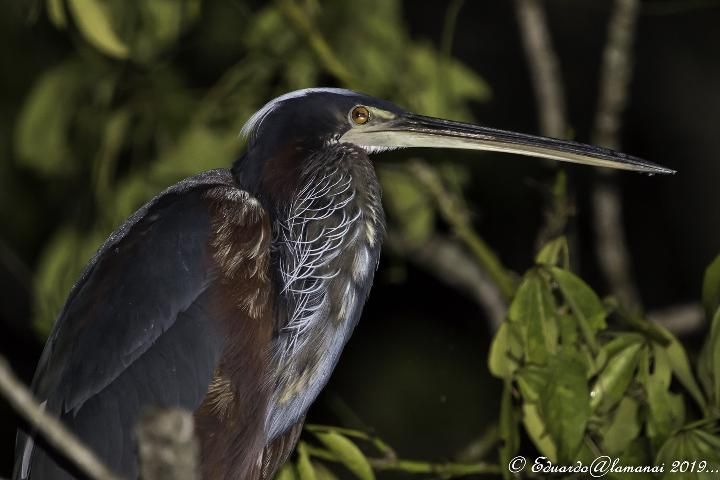
Credit: Eduardo @lamanai
Bare-Throated Tiger Heron
Tigrisoma mexicanum, LT 31 in, WS 45 in.
Large heron with black crown and narrow, gray-and-buff striping. Throat is bare and foreneck is white bordered by black. Solitary, motionless hunter seen standing tall with neck uncoiled in open habitat. Produces a hoarse howk-howk-howk call, and males emit a loud hrrrowwr call at sunset.
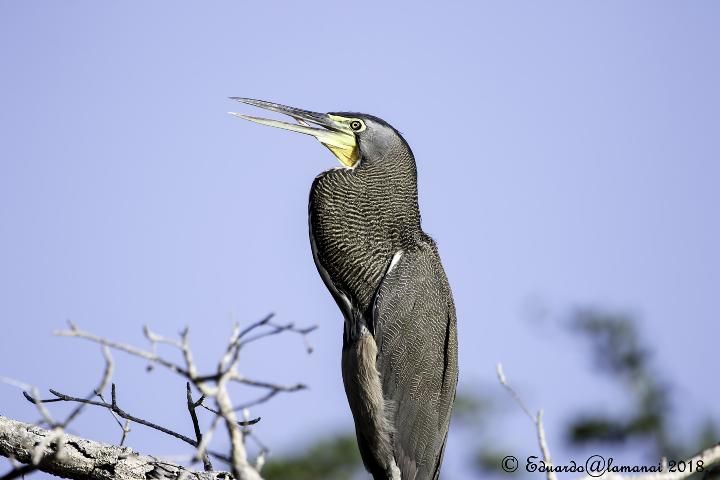
Credit: Eduardo @lamanai
Boat-Billed Heron
Cochlearius cochlearius, LT 21 in, WS 30 in.
Large, sturdy heron with pale gray wings, buff breast, and brown belly. Large, dark eyes. Broad, black bill used to scoop prey from shallow water. Forages nocturnally, leaving roost 30 minutes after sundown to perch over water, often in pairs. Deep squawking call.
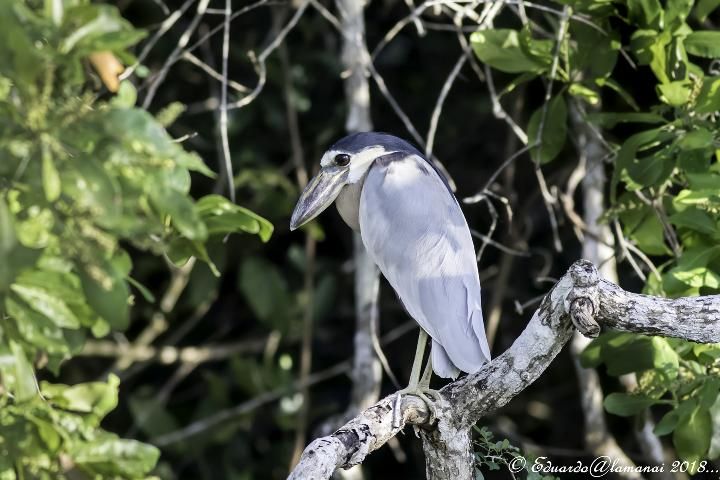
Credit: Eduardo @lamanai
Glossy Ibis
Plegadis falcinellus, LT 23 in, WS 36 in.
Slender, medium-sized bird with reddish-brown body and glossy, blue-green wings. Often appears dark at a distance. Long, curved bill used to probe for prey in muddy pools and marshes. Forages, roosts, and nests communally with other wading birds. Nasal grunting voice.
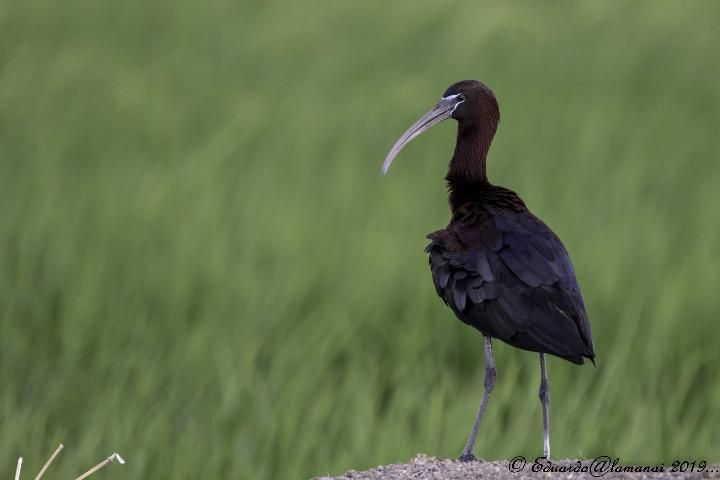
Credit: Eduardo @lamanai
Pinnated Bittern
Botaurus pinnatus, LT 27 in, WS 55 in.
Large, sturdy heron with buffy-brown plumage and cryptic patterning. Rarely seen. Patient hunter. Solitary breeder. Rough rawk-rawk-rawk call. At dusk, male call is deep poonk/poonkoo.
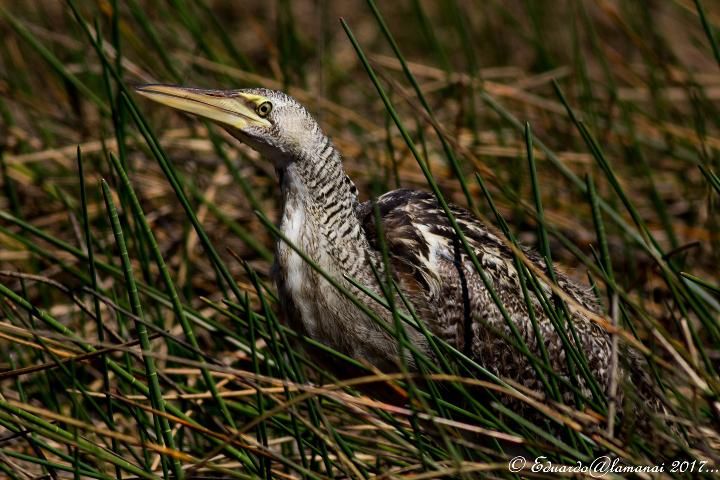
Credit: Eduardo @lamanai
Great Blue Heron
Ardea herodias, LT 46 in, WS 72 in.
Largest heron, with a gray-blue body, long legs, and a long neck that can be coiled or extended. Stands or walks slowly while foraging. Graceful flight with slow wing-beats and arched wings. Call is a deep, hoarse trumpeting or croaking.
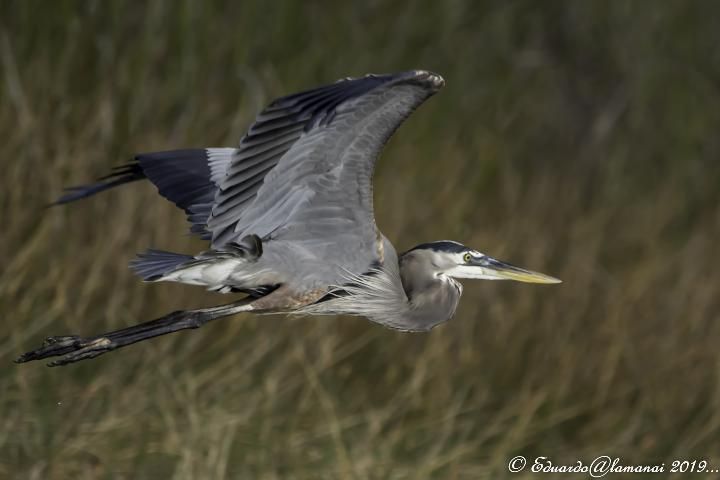
Credit: Eduardo @lamanai
Great Egret
Ardea alba, LT 39 in, WS 51 in.
Large size, very long neck, deep gravelly croaking.
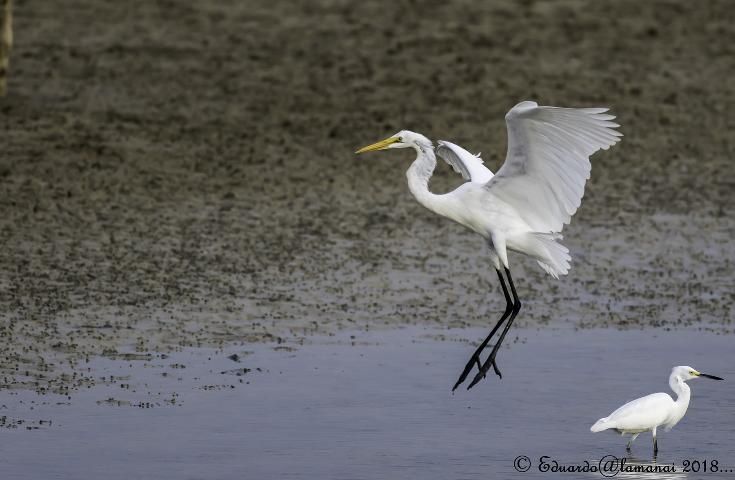
Credit: Eduardo @lamanai
Snowy Egret
Egretta thula, LT 24 in, WS 41 in.
Small with all-white plumage, thin black bill, yellow feet, and lacy feathers. Common and often found in mixed roosts.
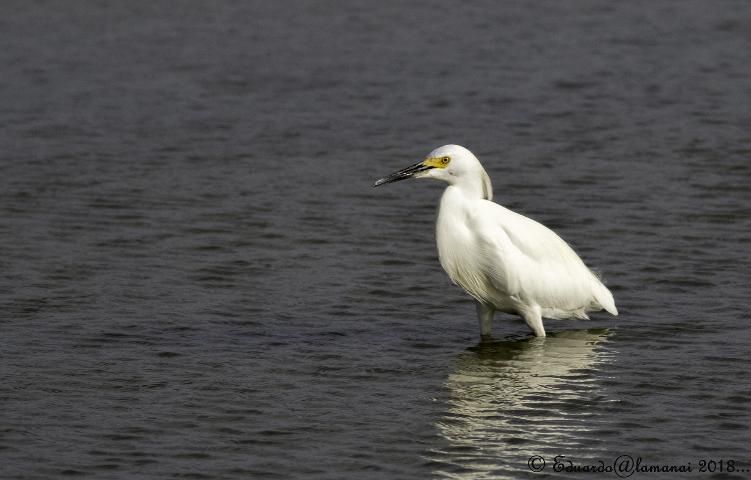
Credit: Eduardo @lamanai
Jabiru Stork
Jabiru mycteria, LT 55 in, WS 108 in.
Tallest bird with second largest wingspan in Neotropics. Black, featherless head and neck with flexible red pouch at base. Large, pointy bill and white plumage. Forages with open bill when wading in shallow water. Powerful, graceful flier. Not abundant but protected in Belize. Hoarse, chattering voice, bill-clatters in breeding.

Credit: Eduardo @lamanai
Limpkin
Aramus guarauna, LT 26 in, WS 40 in.
Large, dark brown with a long bill. Uncommon and inconspicuous in brushy swamps, seen walking slowly along water's edge searching for apple snails. Usually solitary. Very loud, haunting scream or wail heard mainly at night.
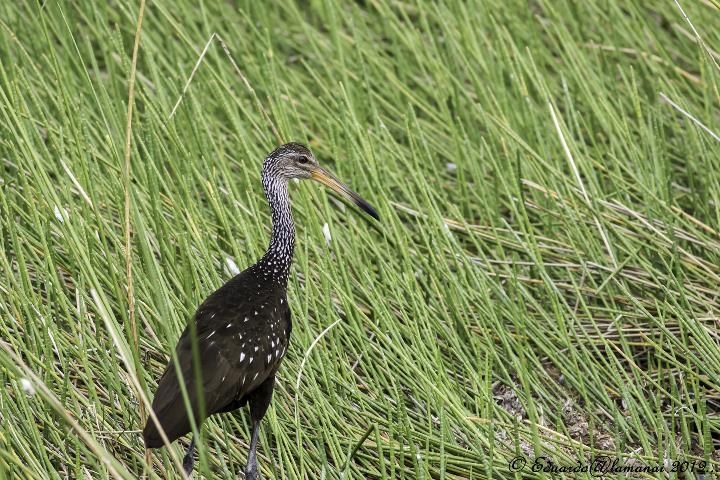
Credit: Eduardo @lamanai
Least Bittern
Ixobrychus exilis, LT 13 in, WS 17 in.
Small, reddish-brown bird with buff-striped breast and a short black cap. Uncommon and solitary in marshes. Often seen clinging to reeds watching for fish below. Sometimes flies short distance just above reeds with quick wingbeats. Song is a low, cooing poo-poo-poo.
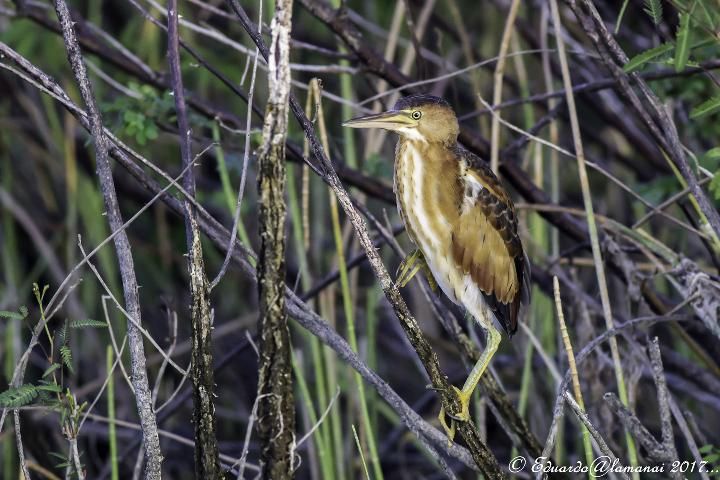
Credit: Eduardo @lamanai
Tri-Colored Heron
Egretta tricolor, LT 26 in, WS 36 in.
Slender, medium-sized bird found in open shallow water. Solitary but roosts communally. Actively chases fish. Long brown neck and bill, dark blue-gray body and white belly. Moaning, croaking call.
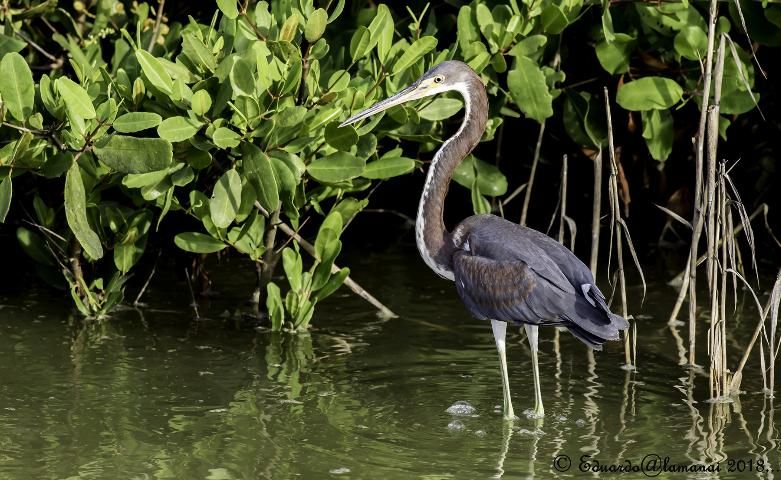
Credit: Eduardo @lamanai
Woodstork
Mycteria americana, LT 40 in, WS 60 in.
Very large stork with a white body and black flight feathers. Dark head and neck are bare of feathers. Walks in shallow, muddy pools with submerged bill foraging for fish. Often soars with vultures and roosts in colonies. Mute except bill-clattering during nest displays.
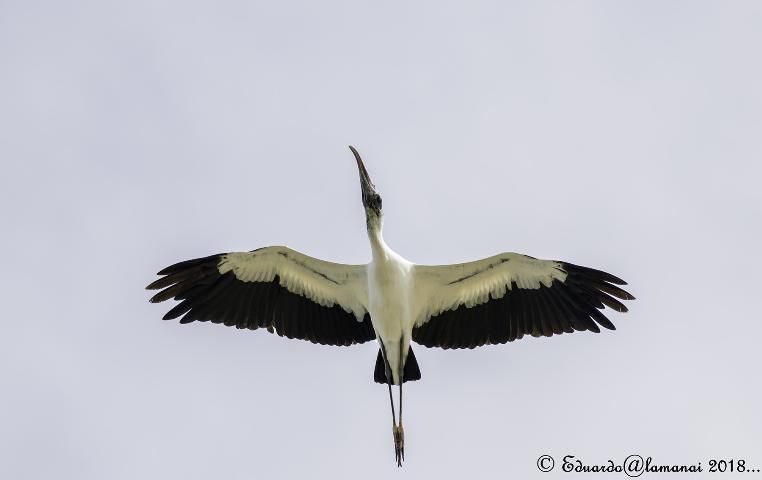
Credit: Eduardo @lamanai
For More Information
LAMANAI FIELD RESEARCH CENTER
Indian Church Village Orange Walk, Belize
Tel: 011-501-678-9785
Email: info@lamanai.org
Reference
Jones, H. L. 2004. Birds of Belize. Austin, TX: University of Texas Pres.